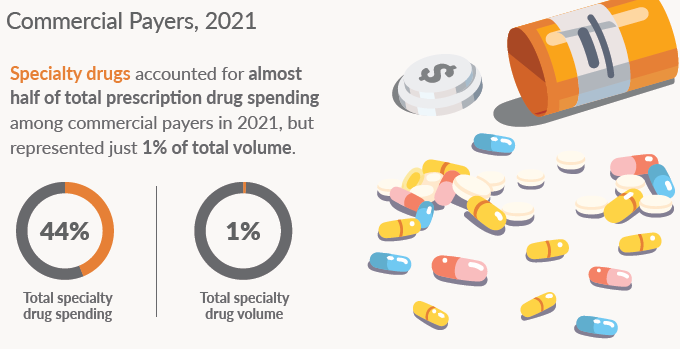Center for Improving Value in Health Care (CIVHC) released an updated prescription drug rebate analysis highlighting the impact drug rebates have on prescription drug spending. The analysis shows that Colorado continues to see year over year increases in spending for prescription drugs, in spite of rebates which are intended to provide some relief from high cost drugs.
Across all health insurance payers – both public and private – prescription drug spending per person per year is rising more dramatically than any other health care category. From 2013-2020, prescription drug costs for health insurers and patients combined rose 97% according to CIVHC’s Community Dashboard produced with data from the Colorado All Payer Claims Database (CO APCD).
Drug rebates refer to compensations provided by manufacturers to Pharmacy Benefit Managers (PBMs) which in turn share rebates with health insurance payers to help reduce the cost of specific drugs. Manufacturers provide drug rebates to PBMs as incentives for placing certain drugs on the payer’s preferred drug list. These rebates can provide health insurers with some relief from high cost drugs, although some argue they may also be contributing to overall increases in prices because they incentivize use of more brand and specialty drugs.
Drug rebates are mandated for most drugs covered by Medicaid, and Medicaid shares the rebates with the Federal government to reduce the cost of covering prescription drugs. Laws governing commercial plans that offer Medicare Part D indicate that rebates must be used to lower premiums. However, those with Medicare Part D are still responsible for co-pays on pre-rebate drug prices which can cause a significant financial burden in spite of lower premiums. For commercial insurers, it is less clear how rebates are used. This will change in January of 2024, with recent legislation passing in Colorado requiring commercial payers to use rebates to reduce health care costs for employers and members.
“The state of Colorado is putting a lot of effort into decreasing prescription drug costs for Coloradans,” said Kristin Paulson, CIVHC President and CEO. “We’re one of only a few states in the nation that are collecting information on drug rebates, which is helping us understand how rebate dollars could be used to lower costs for everyone.”
According to the most recent analysis of drug rebate information submitted to CIVHC by health insurance payers, prescription drug spending increased by roughly 25% from 2019 to 2021 with and without factoring in rebates received by insurers. This indicates that increases in drug rebates are keeping pace with increases in total drug spending and do not have a substantial impact on lowering costs.

Opponents of drug rebates argue that rebates may incentivize the use of higher-cost drugs like brand and specialty drugs. Results of the analysis show that brand and specialty drugs make up only 17% of the total volume of drugs prescribed, but they represent over 84% of all prescription drug spending. Total spending for both specialty and brand drugs increased significantly from 2019 to 2021 (56% and 90% respectively), and rebates increased significantly as well (84% for specialty and 125% for brand). These increases in rebates may be incentivizing higher use of specialty and brand drugs.

Additional insights from the 2021 data in the analysis include:
- Across all payers and all drug types, 29% of total pharmacy spending comes back in the form of rebates.
- Rebates are highest across all payers for brand drugs, with 45% of total brand spending recouped in the form of rebates.
- For commercial payers, specialty drugs make up only 1% of the volume of drugs dispensed through pharmacies, but they represent more than 44% of all pharmacy spending.

To help Change Agents dig deeper into drug rebates, an interactive drug rebate report is available to use online, and a data set is also available for download. In 2022, CIVHC began collecting more specific drug rebate information to support the work of the state Prescription Drug Affordability Board (PDAB). Learn more about the work of the PDAB and CIVHC’s role in a recorded webinar.
For more information about this report and other reports available please visit our website at www.civhc.org or contact us at info@civhc.org.
Additional resources:
- Drug Rebate Infographic
- Drug Rebate Issue Brief
